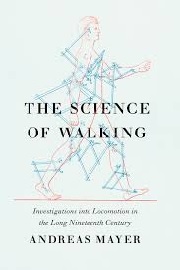The Science of Walking: Investigations into Locomotion in the Long Nineteenth Century

Andreas Mayer (translated by Tilman Skowroneck and Robin Blanton)
University of Chicago Press, £38.00
The Science of Walking retraces the history of the growing interest in the physical act of walking - locomotion - in Western societies (particularly France, Germany, and Britain).
Through the 19th century, the topic became of interest for a variety of professional groups such as anatomists, physiologists, neurologists, orthopaedists, shoe-makers, artists, gymnastic teachers, and the military, whose aim was to describe human walking in its normal and pathological forms in order to improve it or to provide an accurate representation of this phenomenon.
In charting the rise of investigations of the human gait, the author Andreas Mayer takes into account the contributions of a wide range of disciplines, from physiology, to neurology, to orthopaedic surgery, anthropology, and psychiatry, in an engaging narrative that weaves together science and history. In the end, after taking us “from the outdoors back into a dark laboratory” and back again, the author reaches the conclusion that “this mundane activity has proven remarkably recalcitrant to being transformed into a scientific object”.
The book strikes a good balance between detail (it has an extensive bibliography) and readability. I particularly enjoyed reading about the social, political, and aesthetic ramifications of the studies described in the book. It’s a good reminder of how science doesn’t operate in a vacuum, but rather is influenced by and interacts with wider society.
Valentina Marconi MRSB


